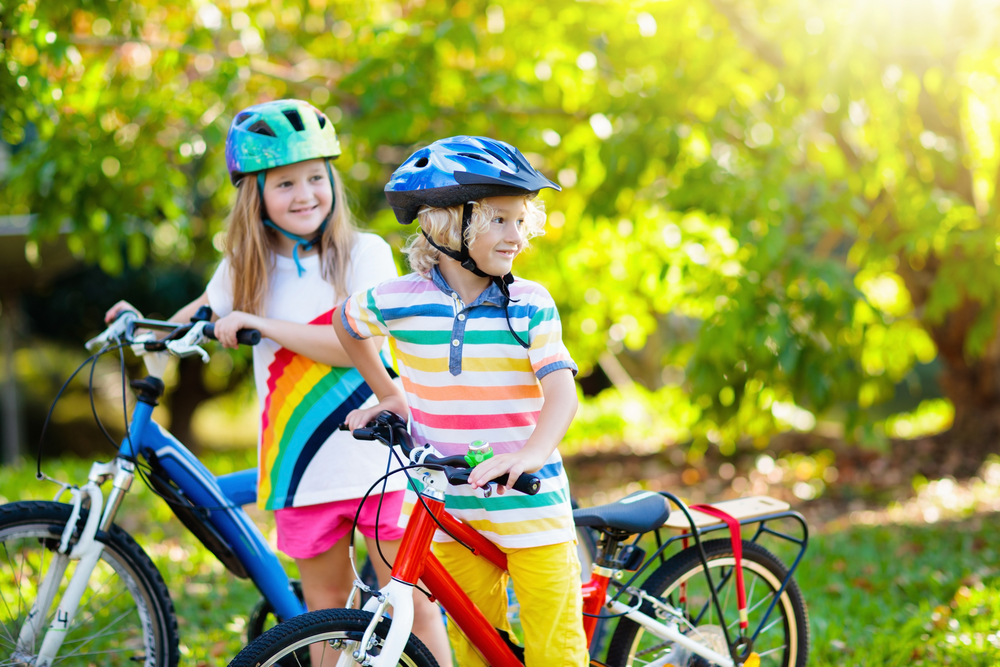We all know sports and recreational activities are important for healthy, happy kids. Summer might mean everything from biking to baseball to rock climbing. Winter, everything from skiing to snowboarding to hockey.
Regardless of which it is, all of these activities carry the risk of head injury. According to the Centers for Disease Control, traumatic brain injuries were diagnosed in over 23,000 children in 2014, including 2,529 deaths. Children make up nearly a third of all hospitalizations for head injuries.
The single most important thing we can do to protect our children is to invest in a quality, well-fitting helmet for each of their favorite activities.
Step 1: Right Helmet for the Right Activity
Most kids we see on bikes today are wearing helmets, but you might be surprised how many other activities also require head protection. Get their head in gear for the following:
- Bicycles, kick scooters, tricycles, rollerblades or roller skates
- Football, baseball, hockey, lacrosse or rugby
- Horseback riding
- Skiing, snowboarding
- ATVs, motocross, go-karts or snowmobiles
- Skateboarding
- Power scooters or mopeds
- Rock or wall climbing
A helmet for one activity is rarely safe to use for a different activity. All helmets must be:

- Properly fitted. Work with a reputable retailer to help find an activity-appropriate helmet that fits correctly, which means you should bring the child with you to test the fit on the spot.
Otherwise, choose a helmet that is safety rated and read those instructions. A helmet should be both comfortable and snug. Be sure that the helmet is worn so that it is level – not tilted back toward the top of the head or pulled too low over the forehead. Once on, the helmet should not move loosely in any direction, back-to-front or side-to-side. Be sure chin straps are securely fastened so that the helmet doesn’t fall off during a fall or collision.
Oh, and never buy a helmet that is too big with the expectation that your child will “grow into it.”
- In new or good working order. Some helmets can be used after an impact, like hockey or football helmets. In other activities like bicycling, the helmet will be compromised by a single impact and must be replaced. DO NOT USE any helmets that have cracks in the shell or liner, a loose shell, marks on the liner, evidence of crushed foam in the liner, or missing parts. For more information on sports helmets, check out these fact sheets from the CDC.
Step 2: Make ’Em Use Them!
 Horseback riding is another activity that requires a helmet.
Horseback riding is another activity that requires a helmet.As adults, it’s up to us to keep kids in helmets because we know they won’t do it themselves!
- Teach by example. If you’re out enjoying activities together, everyone should be wearing a helmet because we know kids learn by example. Strict helmet rules will eventually become second nature.
- Focus on safety and fun, not just winning. Enforcing the rules for fair play, safety and sportsmanship can prevent head injuries. Tell kids not to strike another athlete in the head, use their head or helmet to contact another athlete, tackle or collide with an unprotected opponent or try to injure or put another athlete at risk for injury.
- Always report. Encourage children to report head injuries immediately to coaches or other adults, even if that means not finishing a game. As many as seven in 10 young athletes with a possible concussion report playing with concussion symptoms. Out of those, four in 10 said coaches were unaware that they suffered a possible concussion.
- Know the rules, regulations and safety suggestions. Whether your child is going for a horseback ride or zipping along ATV trails, follow all safety guidelines. Remind them to slow down and be mindful of other people or impediments that might cause a collision.
Step 3: Know the Signs of Concussion
If a child DOES experience head trauma, early recognition, treatment, and recovery is critical to preventing more serious brain injury. And because most children will not lose consciousness after a concussion, watch for:
-
Headache or pressure in head, dizziness, balance problems, clumsiness
-
Sensitivity to light or noise, blurry vision
-
Nausea or vomiting
- Difficulty concentrating or remembering, feeling dazed or stunned
- Irritability, sadness, nervousness, heightened emotions
- Trouble falling asleep, sleeping more or less than usual
